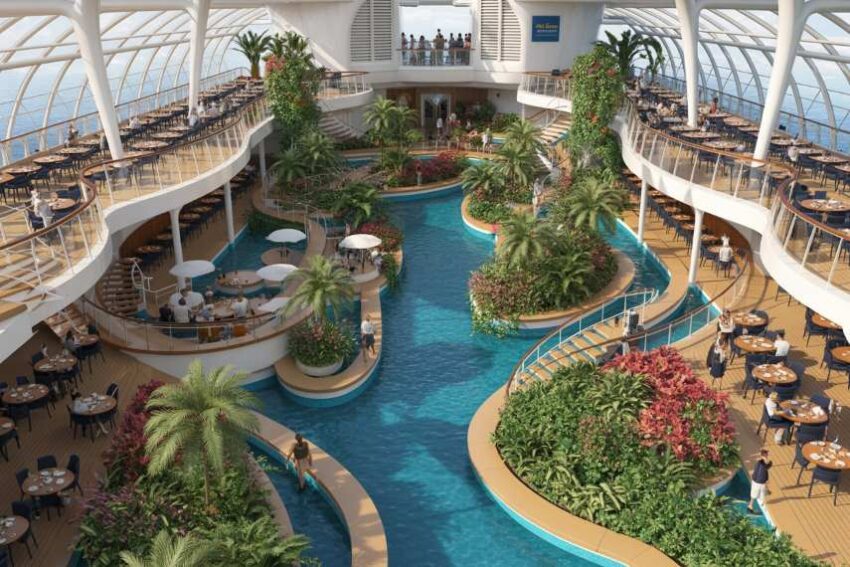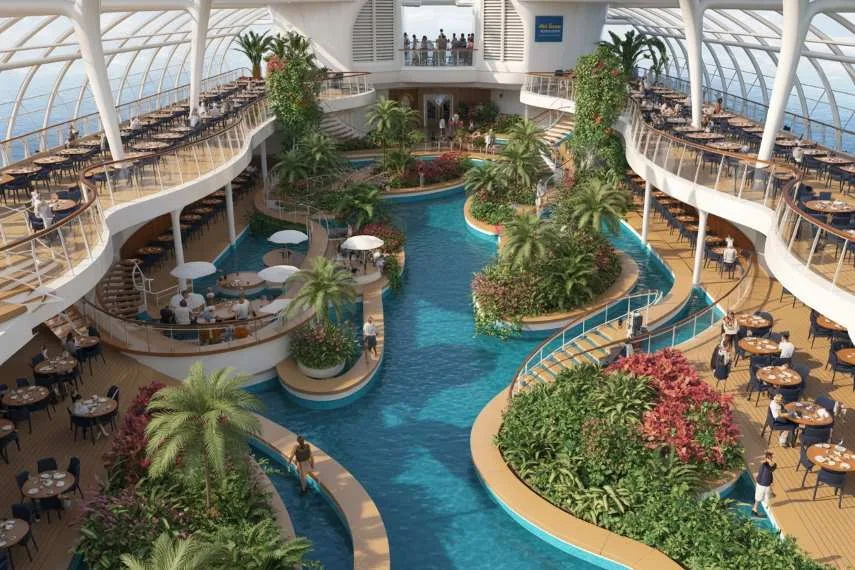Published on
August 18, 2025

Royal Caribbean has unveiled a policy prohibiting the placement of rubber ducks within the Central Park precinct of the Oasis of the Seas, a measure aimed at preserving the integrity of the ship’s signature atrium garden. This verdant enclave, achieved by skylights that span several decks, shelters a curated assemblage of more than 20,000 exotic plants and trees, and serves as a tranquil counterpoint to the ship’s otherwise animated environment.
Though the concealed ducks once animated the Central Park rubber-duck hunt—adopted enthusiastically by families and particularly by children—research has confirmed that the hiding and later displacement of the toys has begun to compromise plant vitality. Guiding guests to squirrel the toys around the park initially appeared to be a benign ritual that amplified cruise storytelling. Unfortunately, the margin of pleasure has slipped, as the indiscriminate distribution of the ducks has subjected delicate flora to repeated mechanical stress, restricted movement, and inadvertent trampling.
Why the Ban Was Necessary: Preserving Oasis of the Seas’ Greenery
The prohibition of rubber ducks within the Central Park venue was deemed essential to safeguard the fragile plant life that defines this elevated urban sanctuary. Although the impromptu “duck hunt” fad was originally celebrated as a lighthearted engagement for families, the same fixture encouraged passengers to scramble through carefully planted flower beds, unwittingly trampling vegetation in their quest for plastic discoveries. A current instructional board within the park requests guests to refrain from the donation or concealment of any rubber items in order to stem further disturbance.
A recent photo, posted by guests to social media, crystallized the rationale: it displayed a horticulturist delicately adjusting a live arrangement that had been pressed to the side. The educators, who toil undeterred by rotating ship schedules, regularly post about their proactive maintenance protocols, affirming that the microclimate of Central Park is sustained by skillful plant placement and judicious irrigation. Converting several decks into a mid-ocean botanical garden demanded expert choreography, and the blend of climatic simulation, greenery, and soft lighting constitutes the ship’s singular argument for urban nature, wholly incompatible with scattered plastic props. End-of-day assessments now reveal that the majority of the assorted flora, featuring 20,000 handpicked specimens, continues to flourish. It is therefore prudent, ship policy indicates, to advance guest enjoyment without inviting incremental peril to an exclusive, meticulously engineered ecosystem.
Passenger Reactions: Mixed Feelings on the New Rule
The recent prohibition of the rubber duck scavenger event has elicited a spectrum of sentiment, especially among vacationers who have come to look forward to the impromptu searches. While numerous guests voiced regret, particularly parents who enjoyed the ritual with youngsters, others acknowledged the rationale. Not long ago, a mother lamented on social media: “So sad. My son loves hiding and searching for ducks in Central Park, but we also have a strict rule of not touching the plants.” A fellow traveler corroborated: “When I was on Oasis in April, I did see people digging in the dirt looking for those tiny ducks.”
Conversely, a considerable contingent expressed reluctant acceptance. Travelers observed that prioritizing the integrity of the shipboard ecosystem outweighs the fleeting entertainment of a scavenger hunt, underscoring a growing awareness of responsible tourism. The consensus, albeit a subdued one, affirms that while the pastime was charming, the continuing viability of the living venue remains paramount to both Royal Caribbean and thoughtful guests.
The Impact of Environmental Regulations on the Cruise Ship Experience
Though the removal of inflatable rubber ducks from Central Park may surprise and perhaps disappoint some guests, the decision underscores Royal Caribbean’s resolute dedication to an ecological philosophy that simultaneously preserves and enhances the cruise experience. Central Park itself, as conceived on Oasis of the Seas, remains a pioneering achievement in marine architecture, affording guests an expansive, open-air garden to engage meaningfully with living flora and fauna during voyages across the open ocean.
From an operational perspective, the horticultural ambience within Central Park is fragile, with microclimates sustained by specialized irrigation and carefully calibrated light cycles. Shaded brasseries, pastries under climbing trellises, and cocktail lounges coddled by living walls compose an evolving ecosystem that demonstrates how luxury and ecological responsibility can coexist. Royal Caribbean’s proactive strategy to protect this verdant space signals to eco-aware travelers that the allure of maritime opulence can continue to evolve without compromise to environmental integrity.
Alternative Locations for Rubber Duck Pleasant Dispersal: Ensuring Continued Passenger Participation
Although the placement of rubber ducks within Central Park is now prohibited, guests may freely partake in the island-wide treasure hunt aboard the vessel. All remaining open public venues, encompassing those observed along the wrap-around promenade and outside on the sunlit decks, may be employed for undercover rubber duck concealment. The line is drawn, however, at the on-board pools, thermal spas, retail boutiques, and in the confined corridors—the ducks may not be secured in these zones, and extra vigilance is mandated to prevent any buoyant avian from accidentally launching into the sea.
This tempered guideline deliberately preserves the celebratory spirit of the expedition while safeguarding the vessel’s own waterways from incidental litter. Travellers continue to be warmly encouraged to seek and set their beaked friends in imaginative nooks, provided they approach the task with sound stewardship of the on-board habitat.
Conclusion: Royal Caribbean’s Efforts to Balance Fun and Sustainability
The recent prohibition of rubber ducks in Oasis of the Seas’ Central Park is emblematic of Royal Caribbean’s strategy to marry passenger delight with comprehensive environmental stewardship. Although some guests may regard the edict as a small inconvenience, it serves a broader pedagogical purpose: it reverberates the message that frivolous, yet tangible, impacts on living installations can accumulate if ungoverned. By curbing an ostensibly benign artifact, the company preserves botanically engineered visual integrity and demonstrates that guest immersion and responsible guardianship may, in concert, flourish. Central Park, therefore, is retrospectively vindicating its design–an avatar of synthetic ecosystem in which rubber remains, to the extent possible, a foreign polymer.
As the maritime sector forges ahead with a near-constant pipeline of infrastructural innovations, the imperative for a triumvirate synthesis of spectacle, opulence, and ecological fidelity must predicate commercial viability. The expanse of Central Park’s landscape and the breadth of its recreational opportunities now operate within an interpretative matrix guarded by non-nanoplastic parameters. Royal Caribbean’s new framework is therefore anticipatory, supplying the broader sector with a viability template whereby passenger-centric economies and quantified external equilibria may flourish concurrently. Analysts may reasonably prognosticate that contemporaneous cruise itineraries will increasingly proffer market-tested, engineered exemptive apparatus, paving the path for a responsible yet enthralling face of modern tourism.






